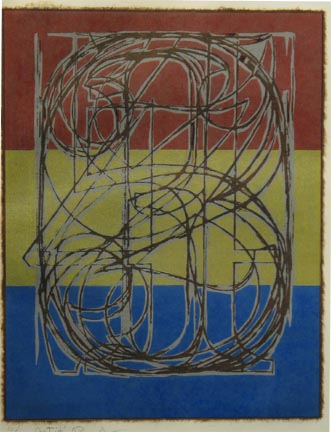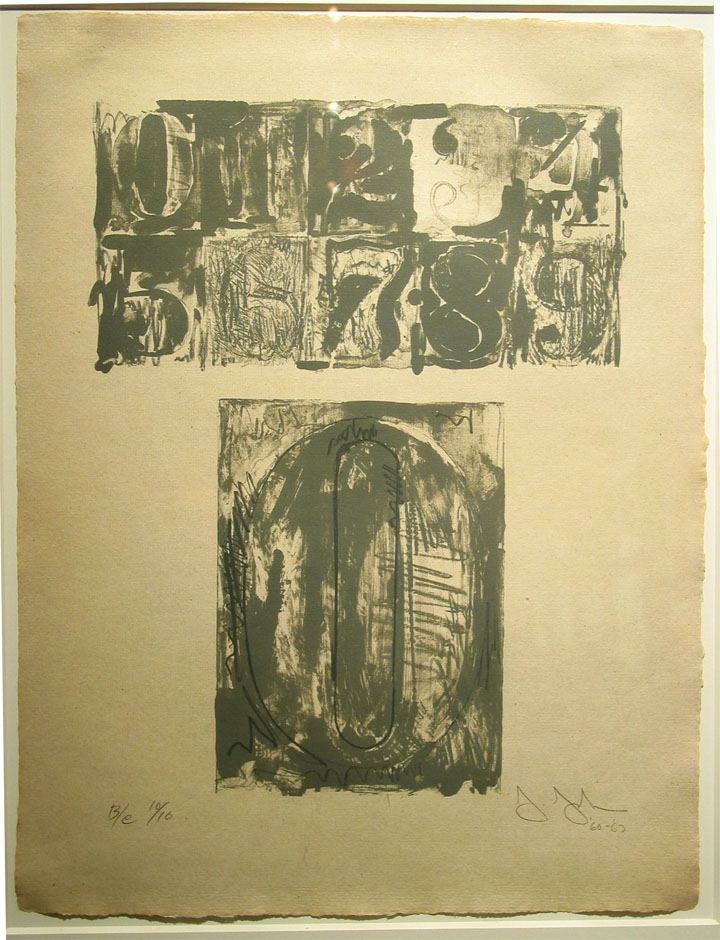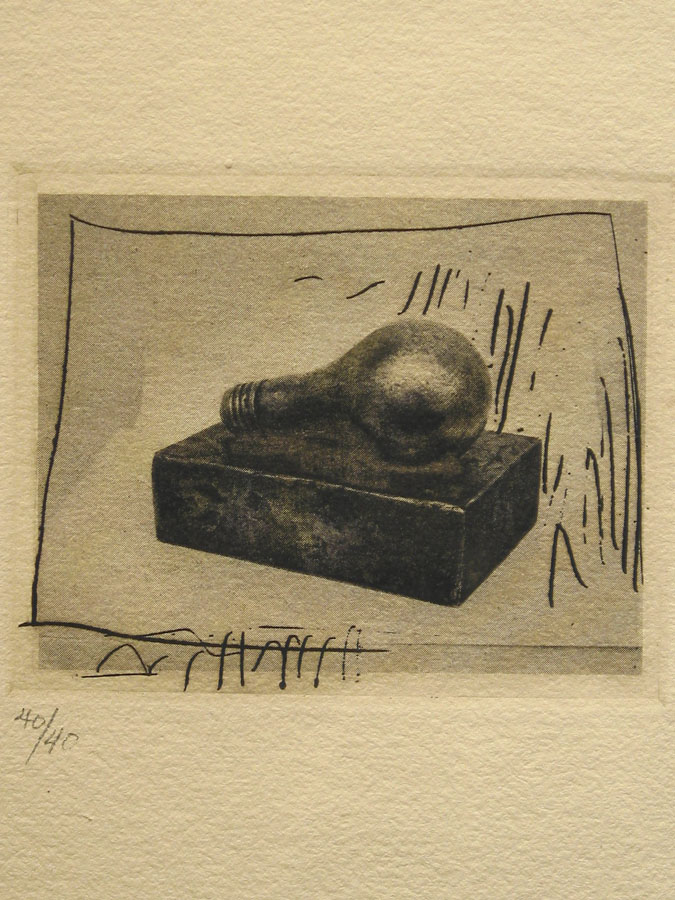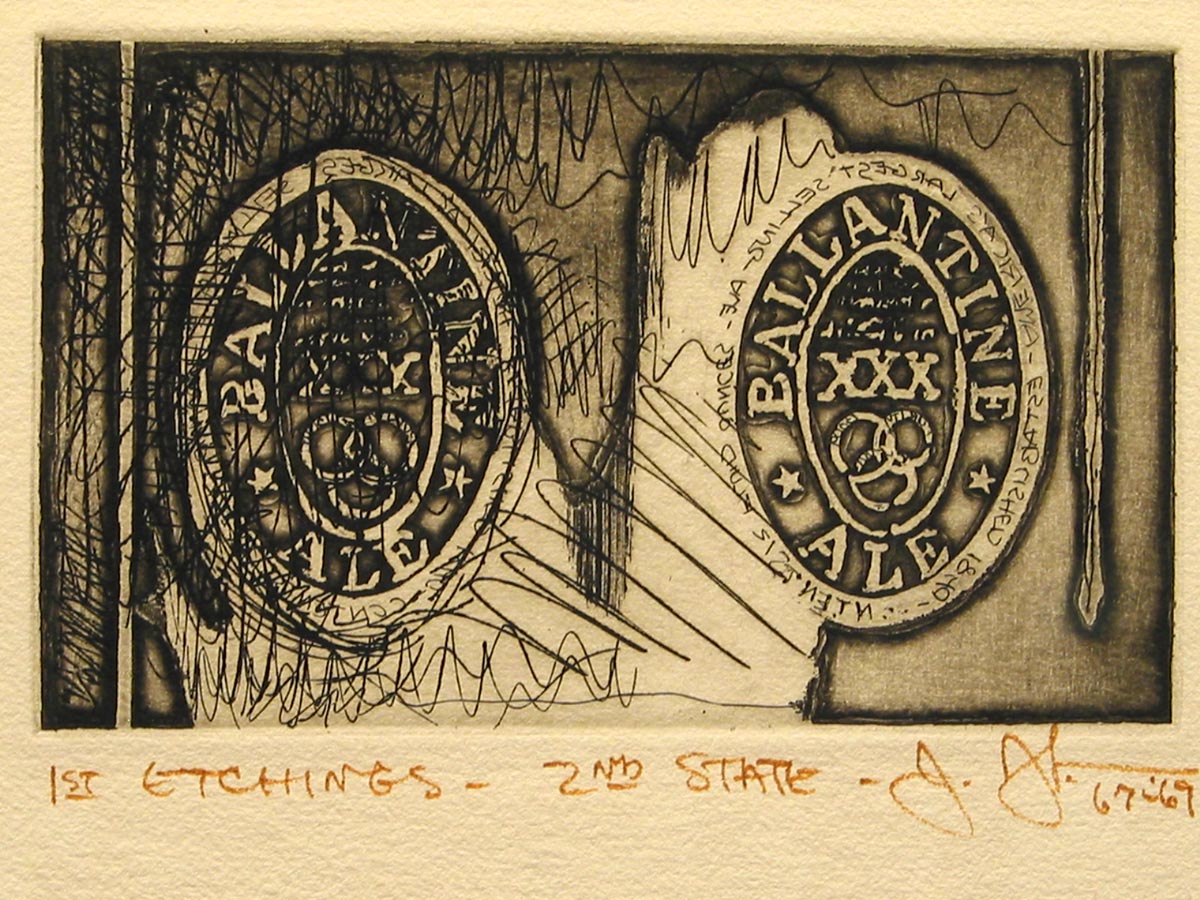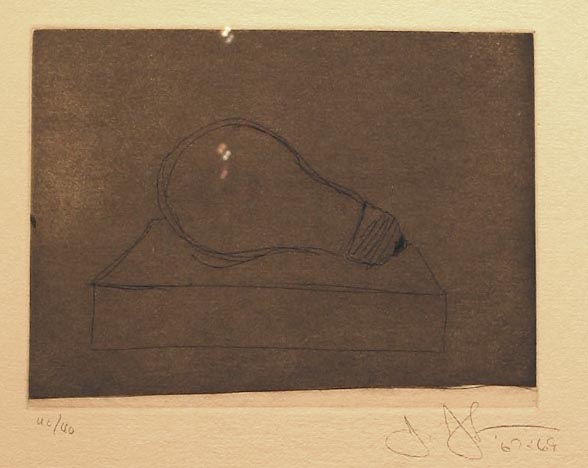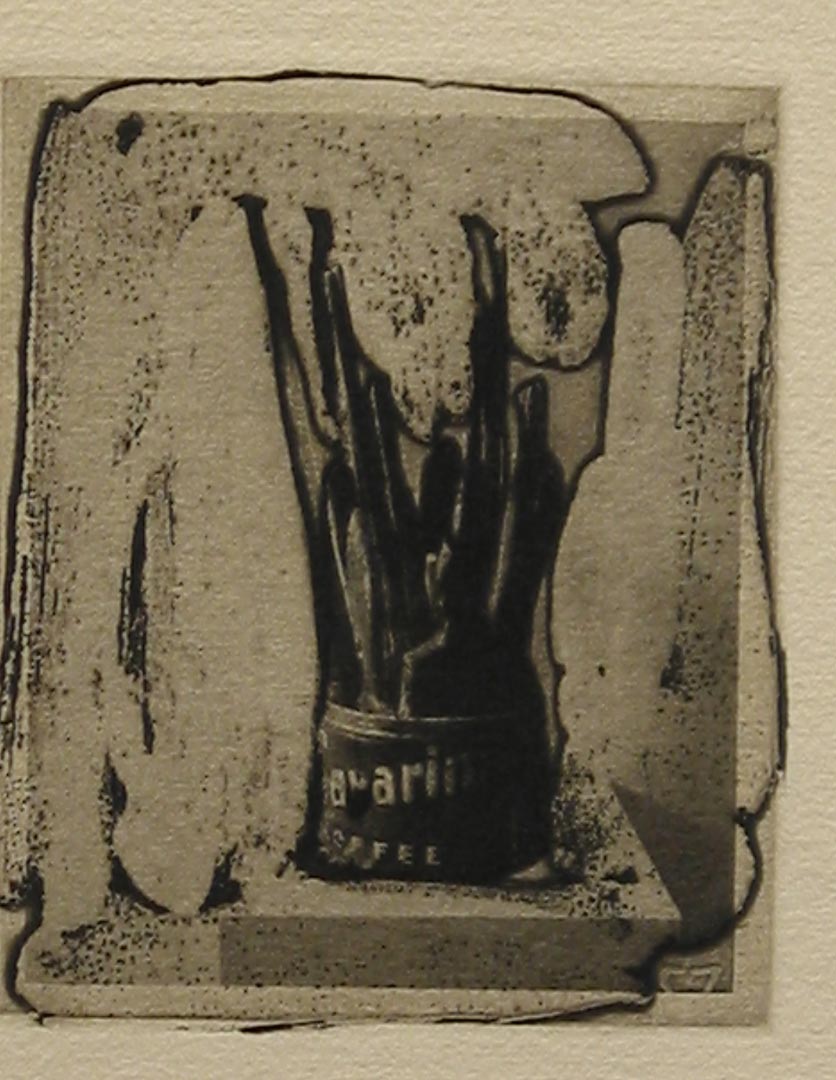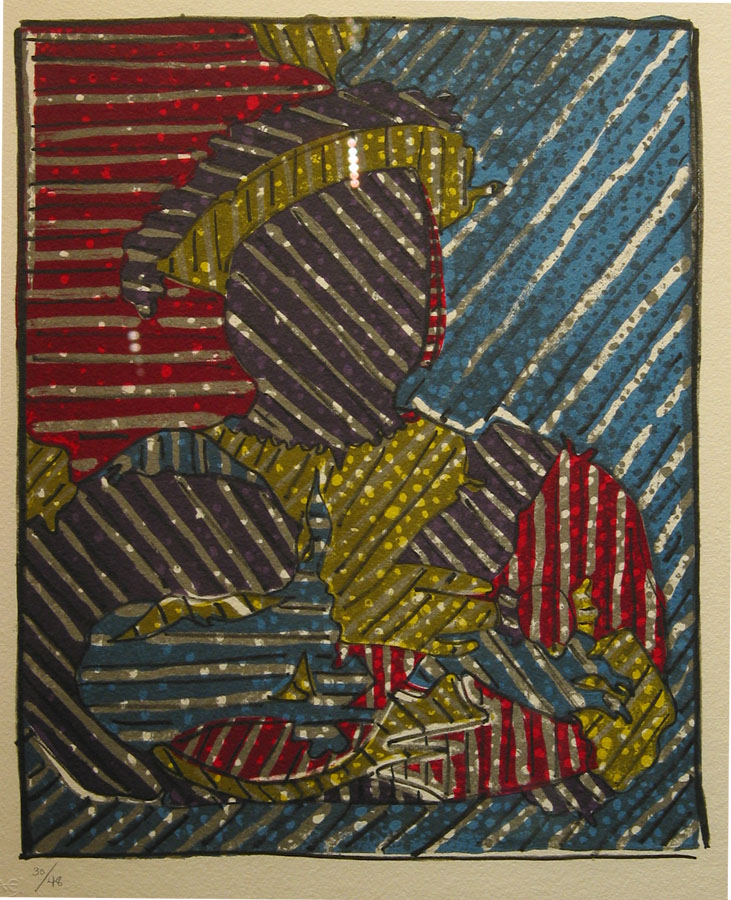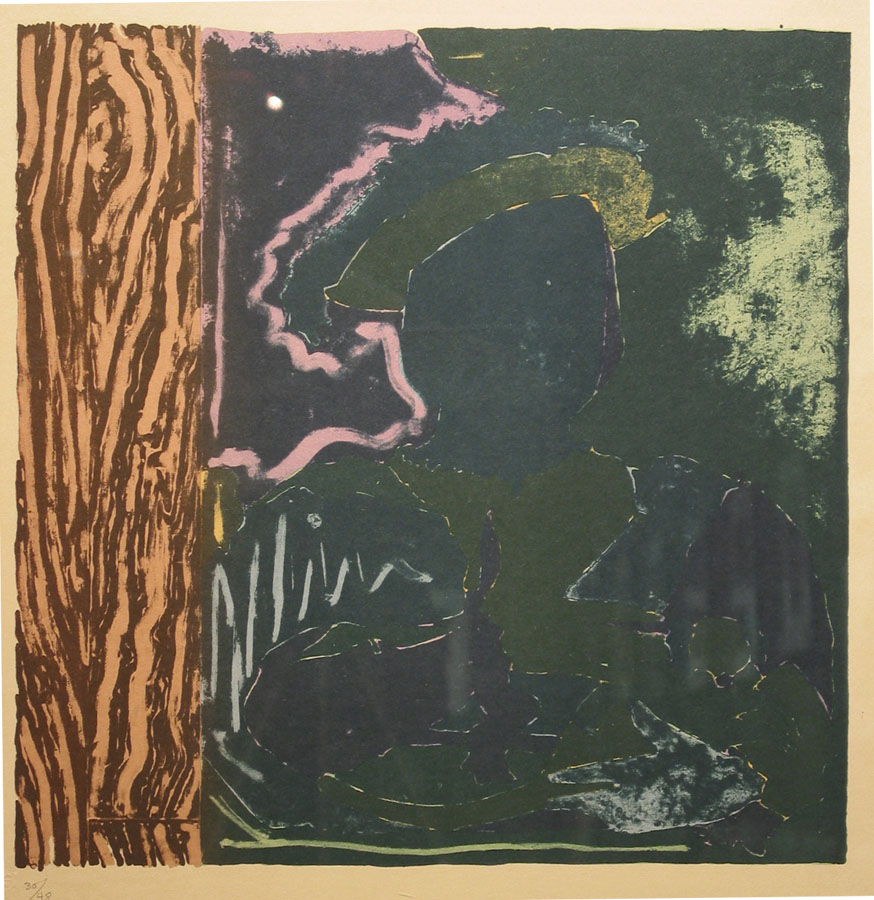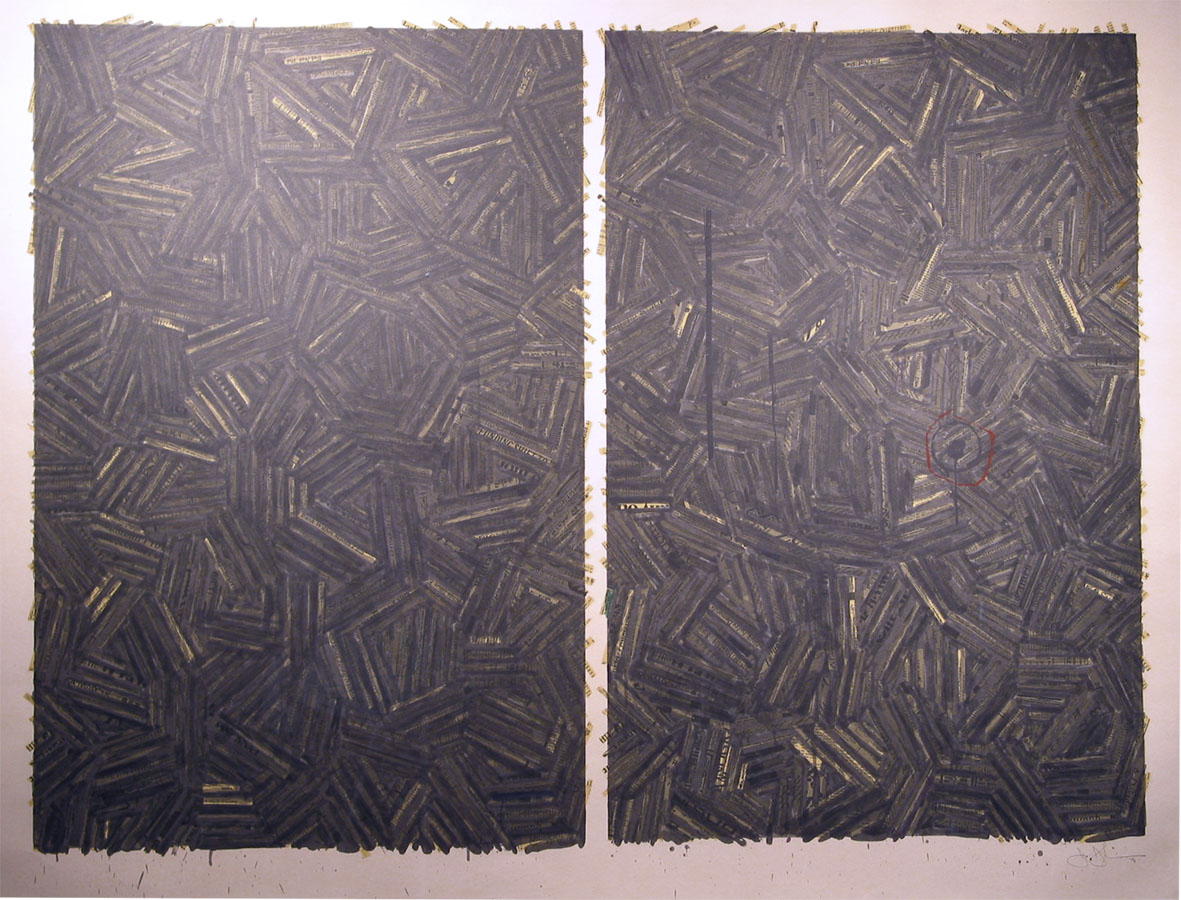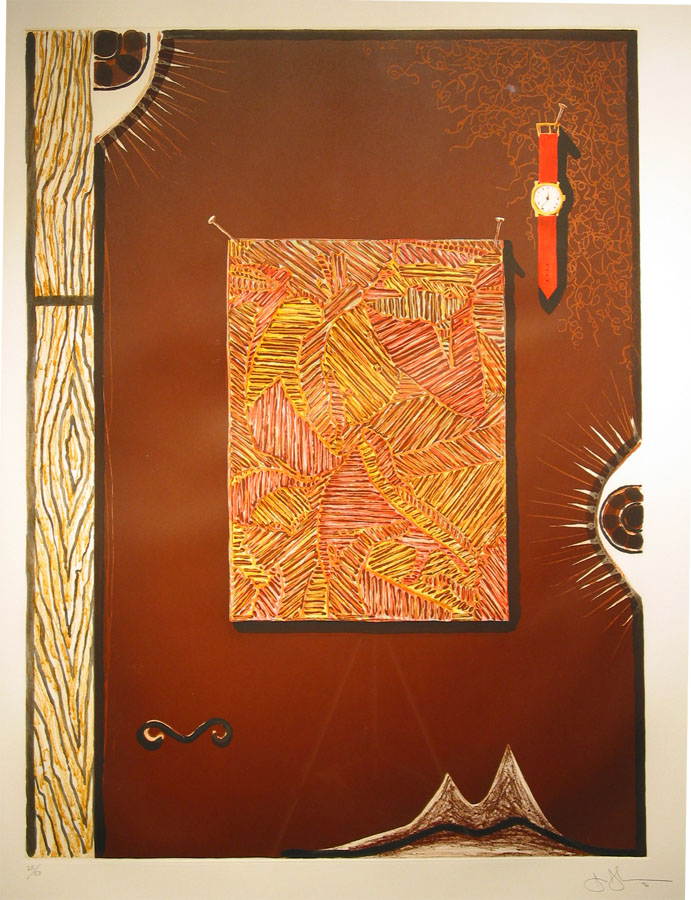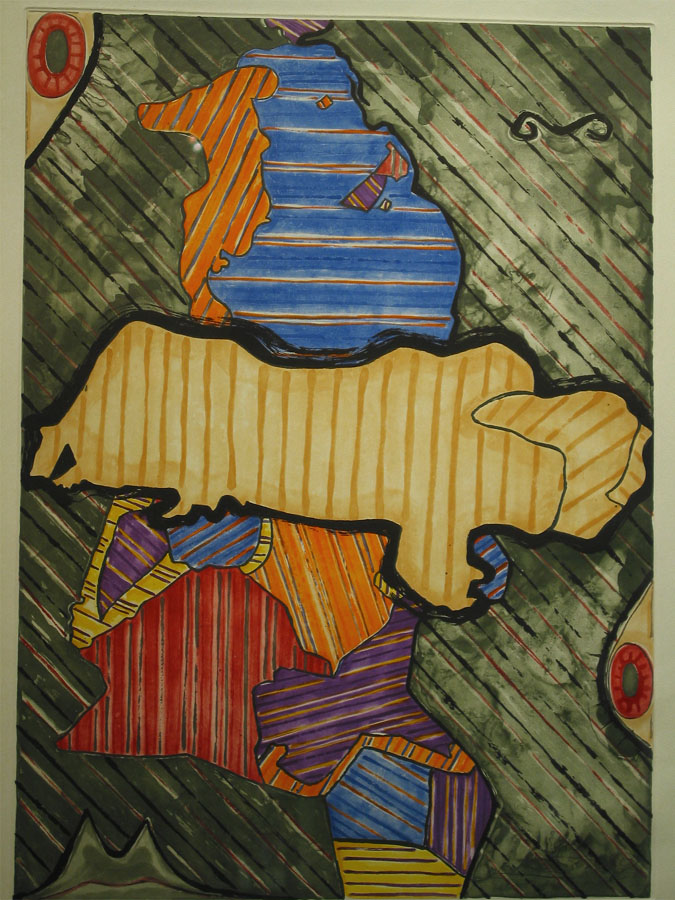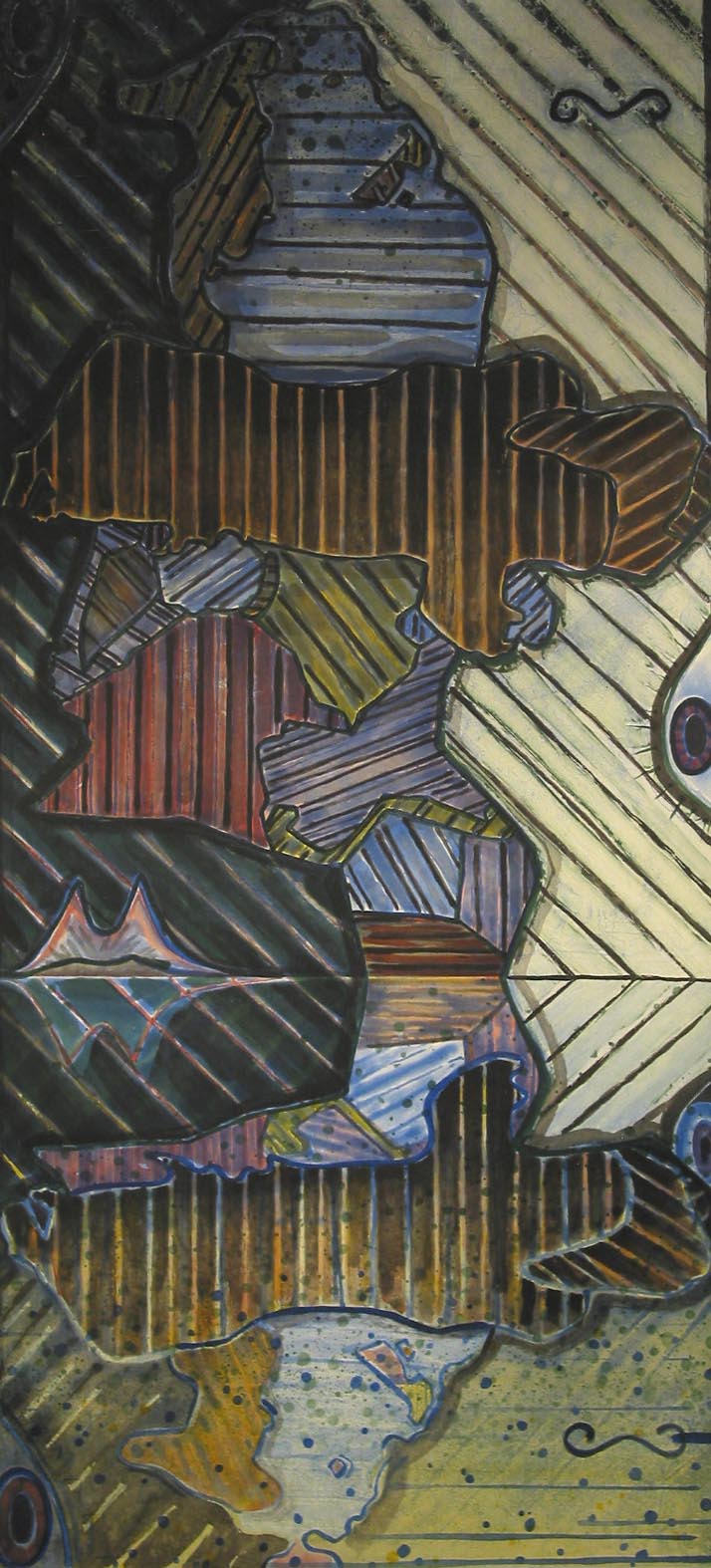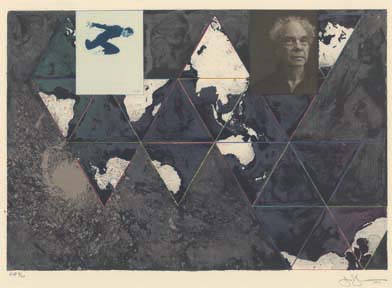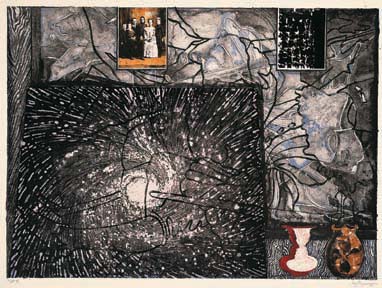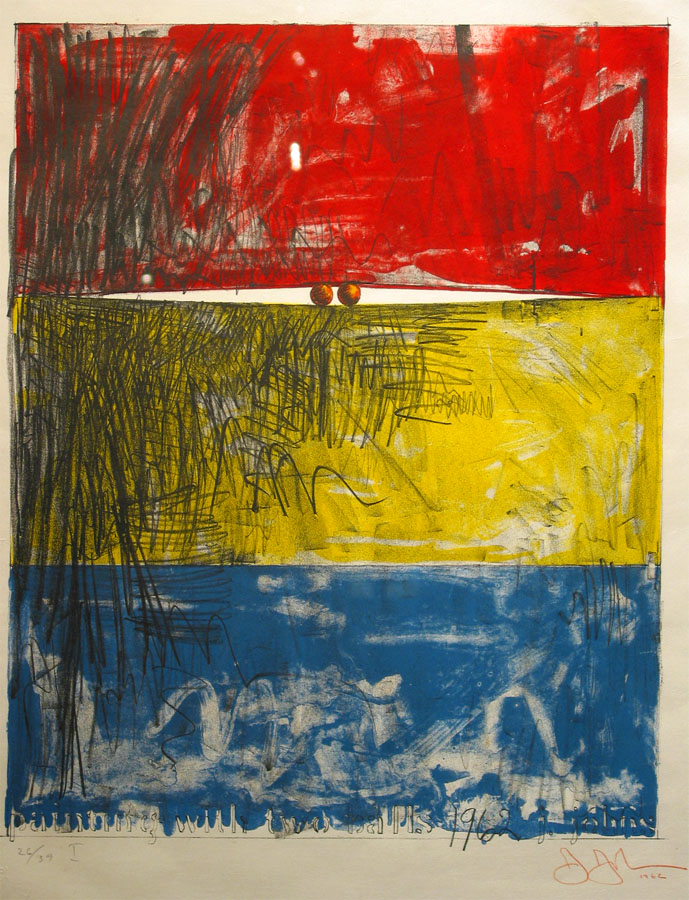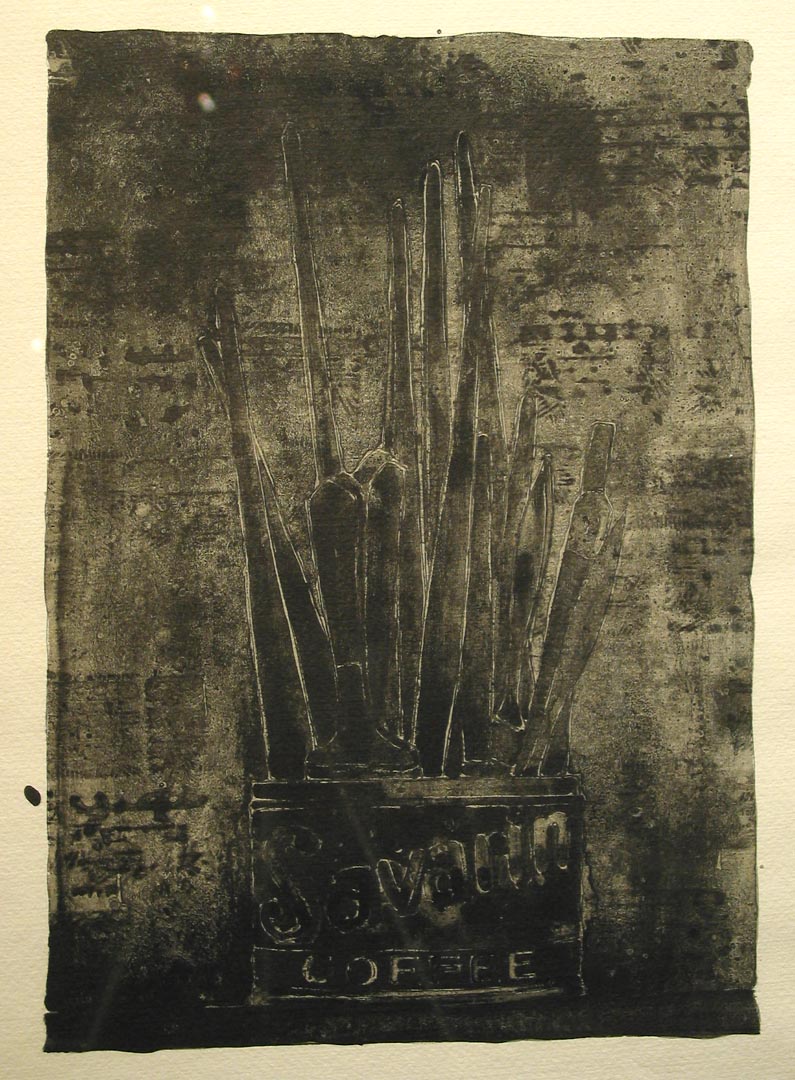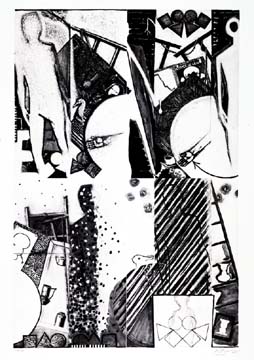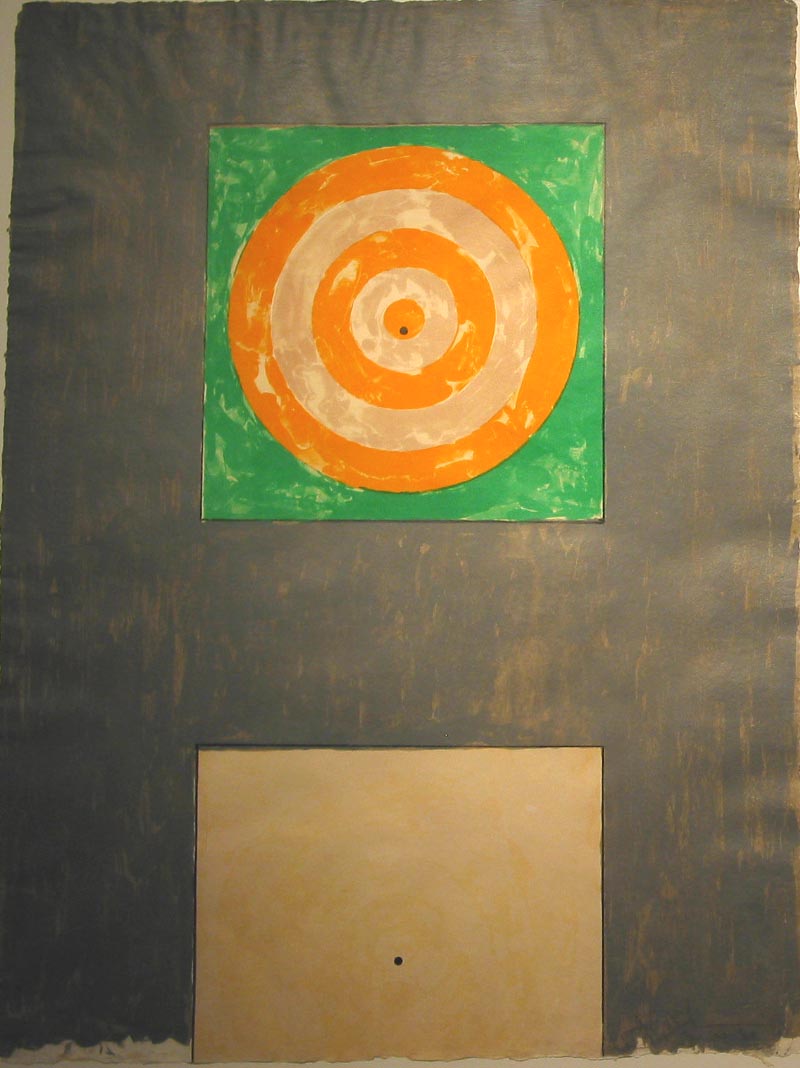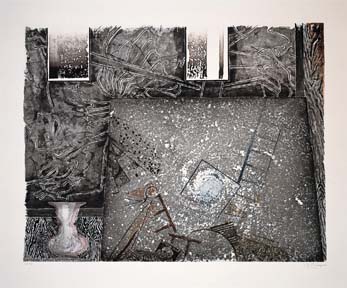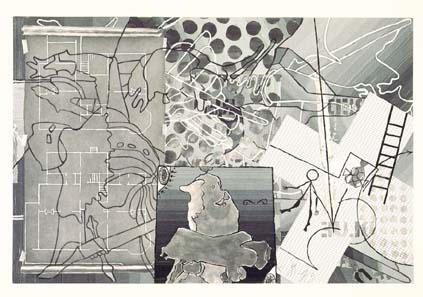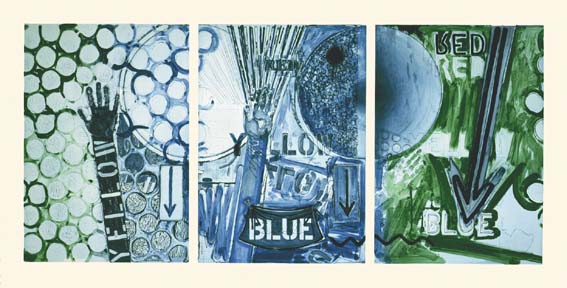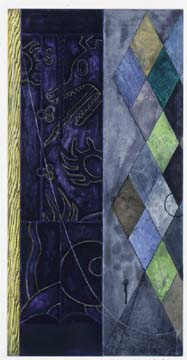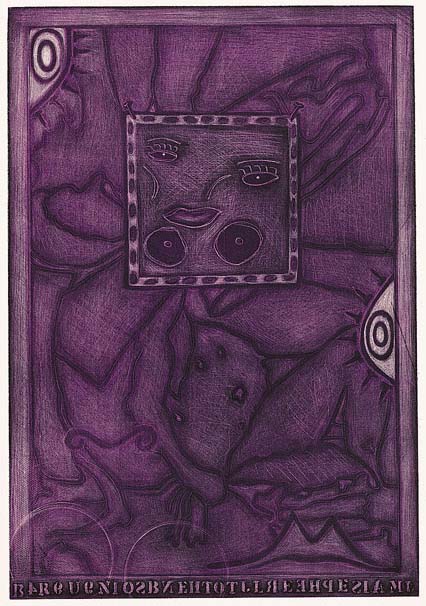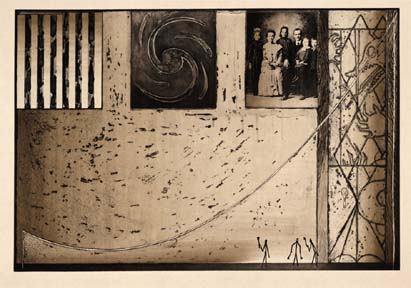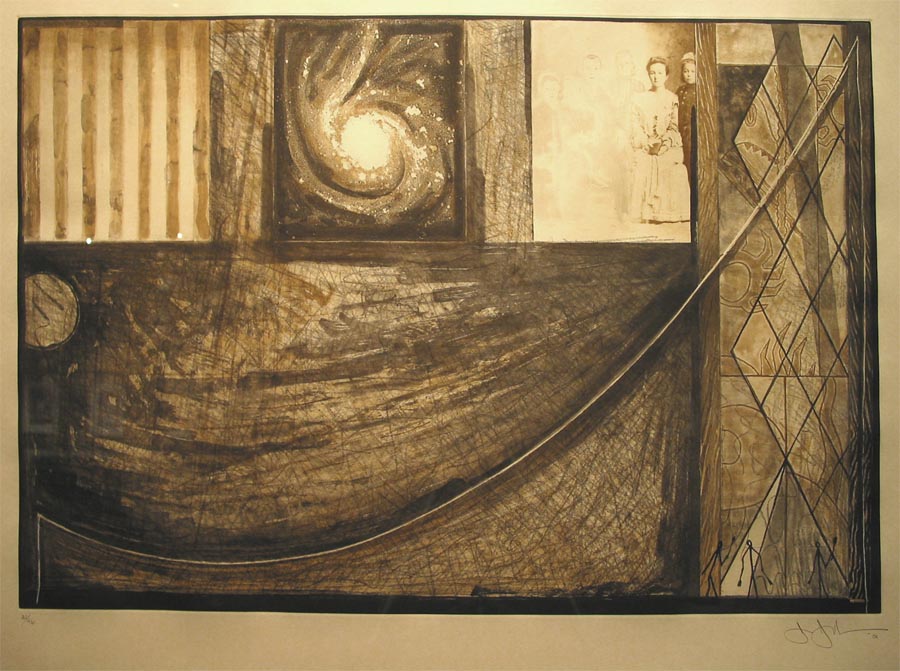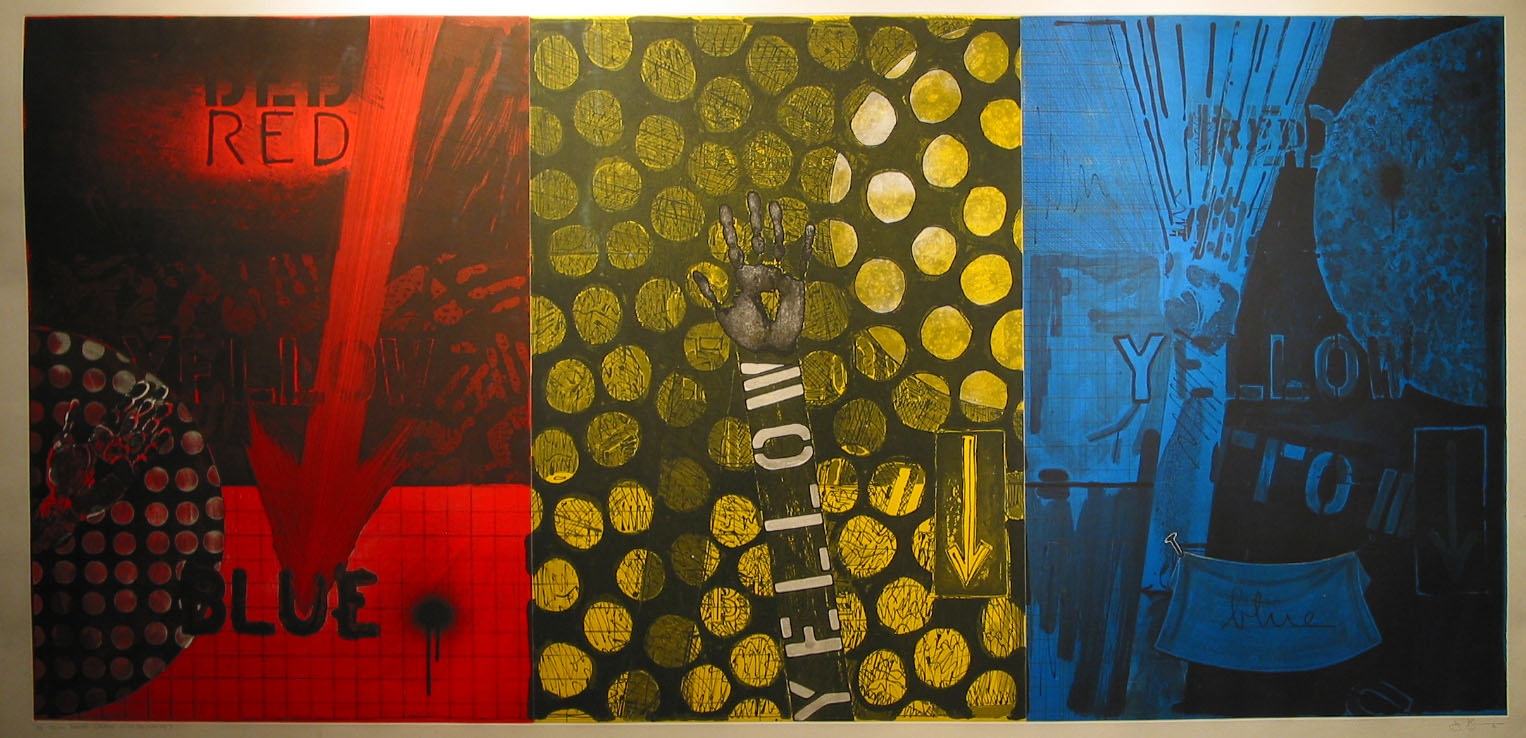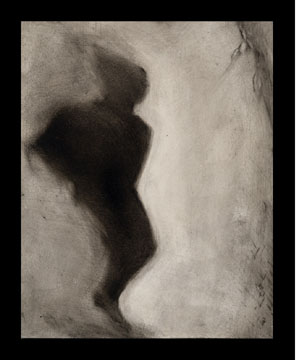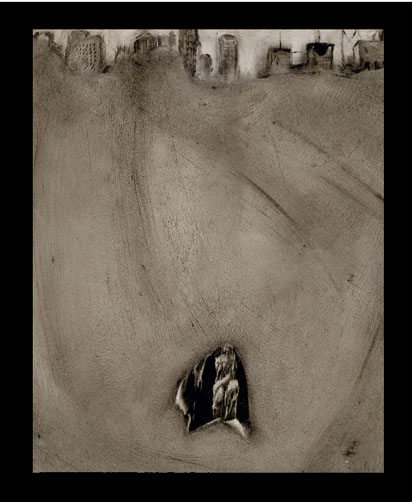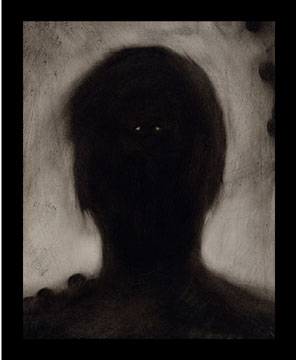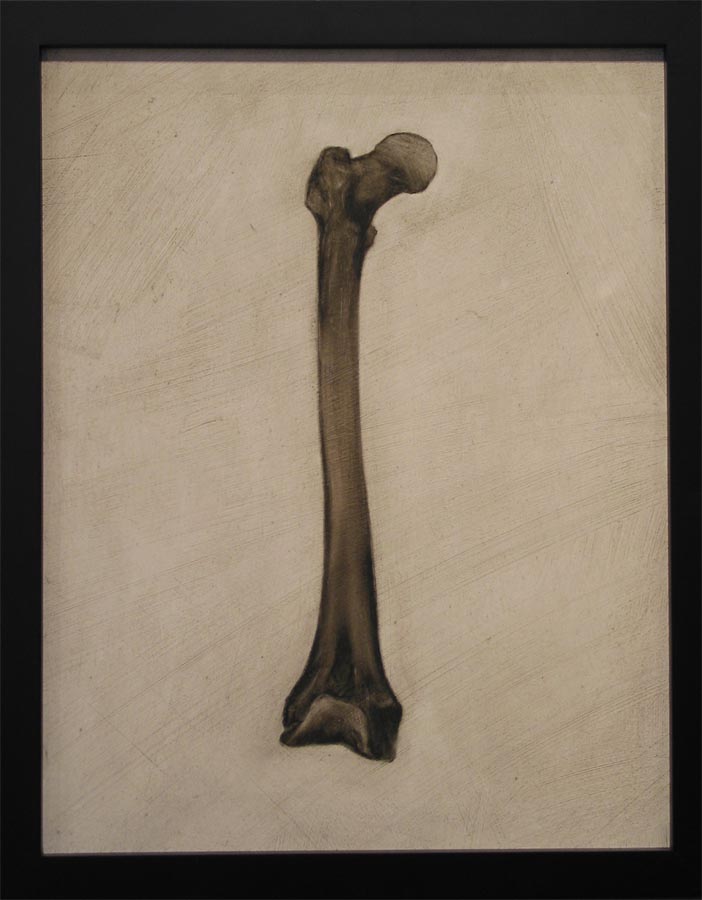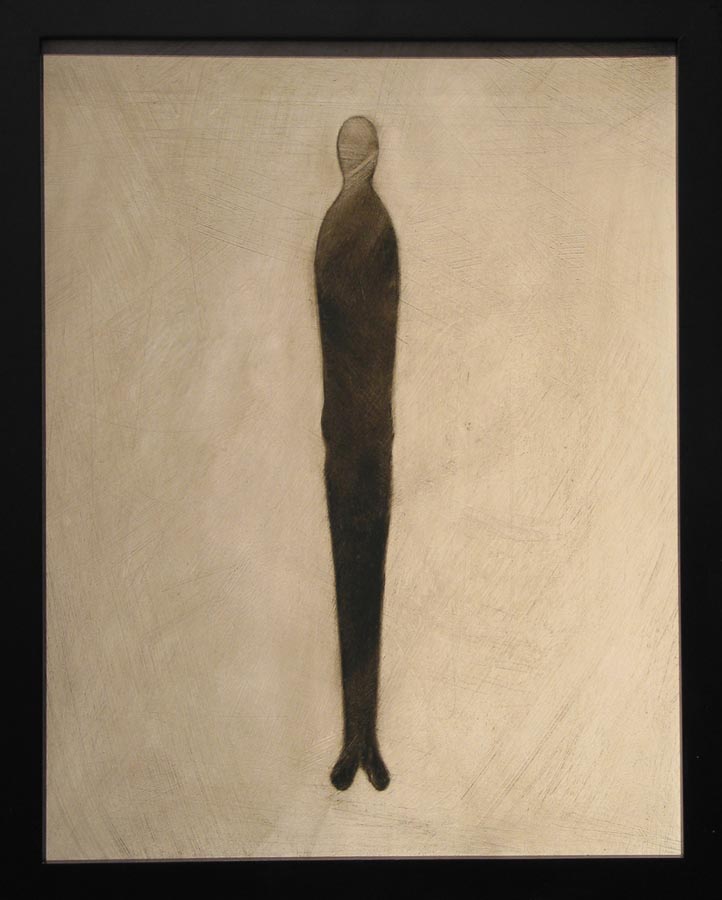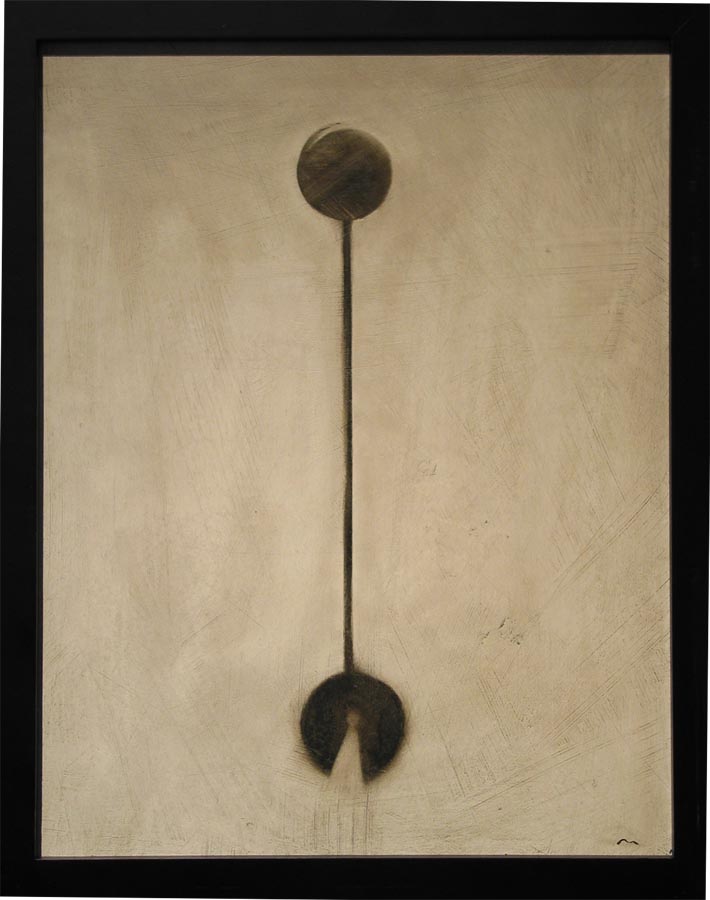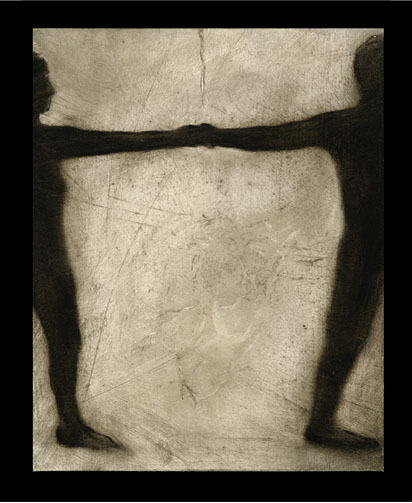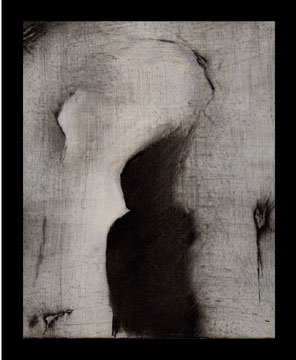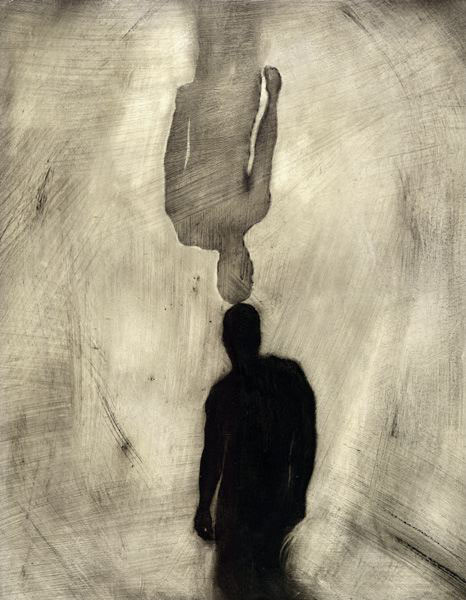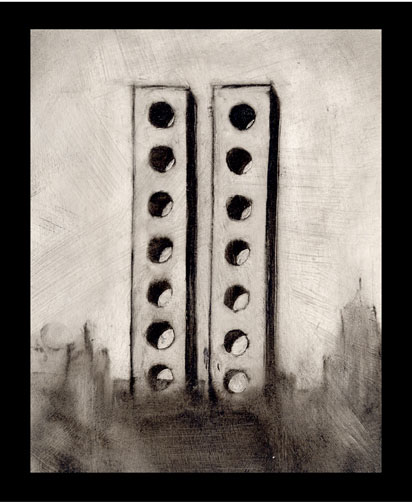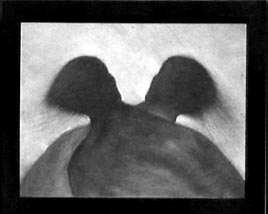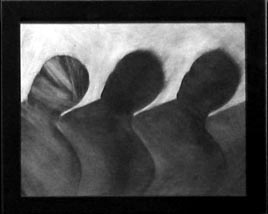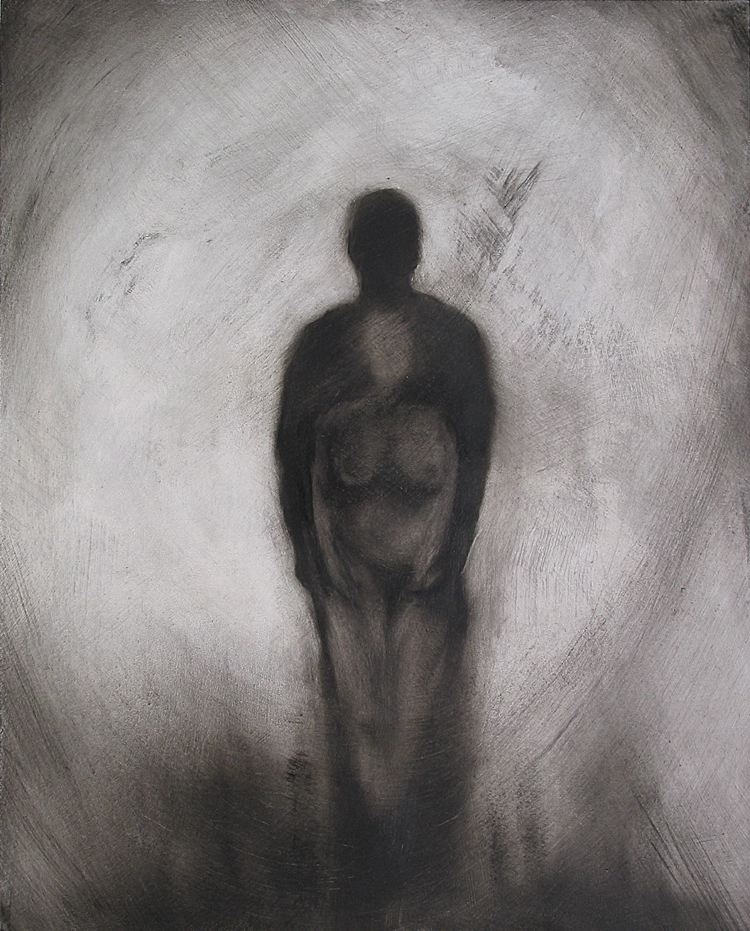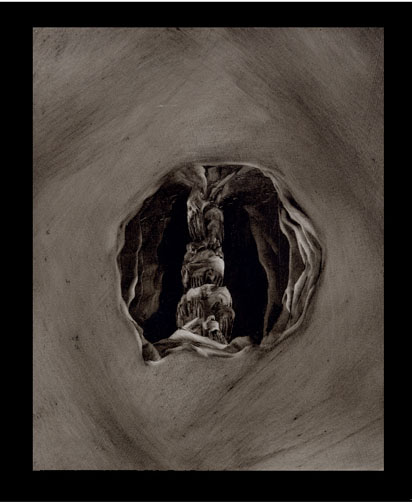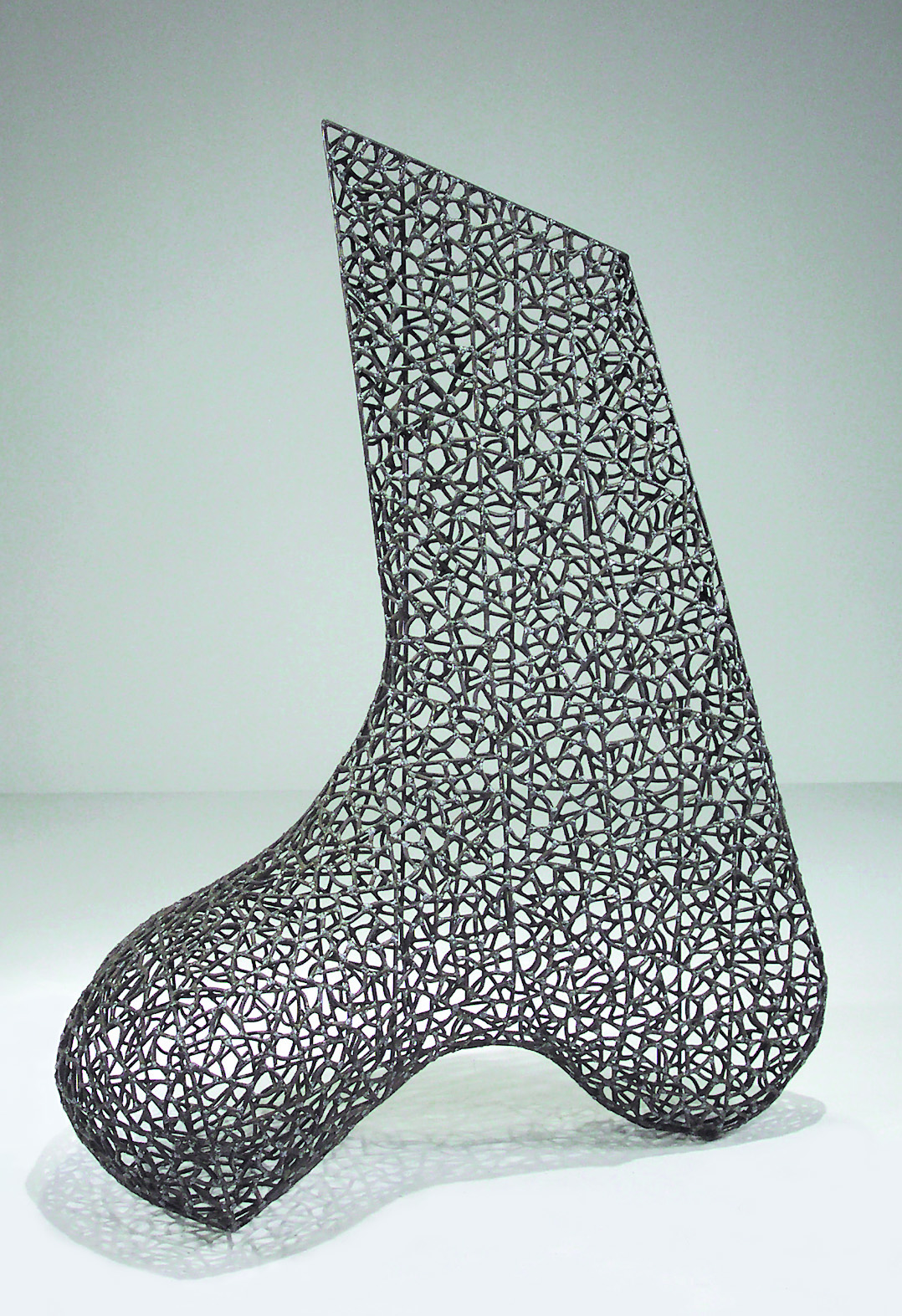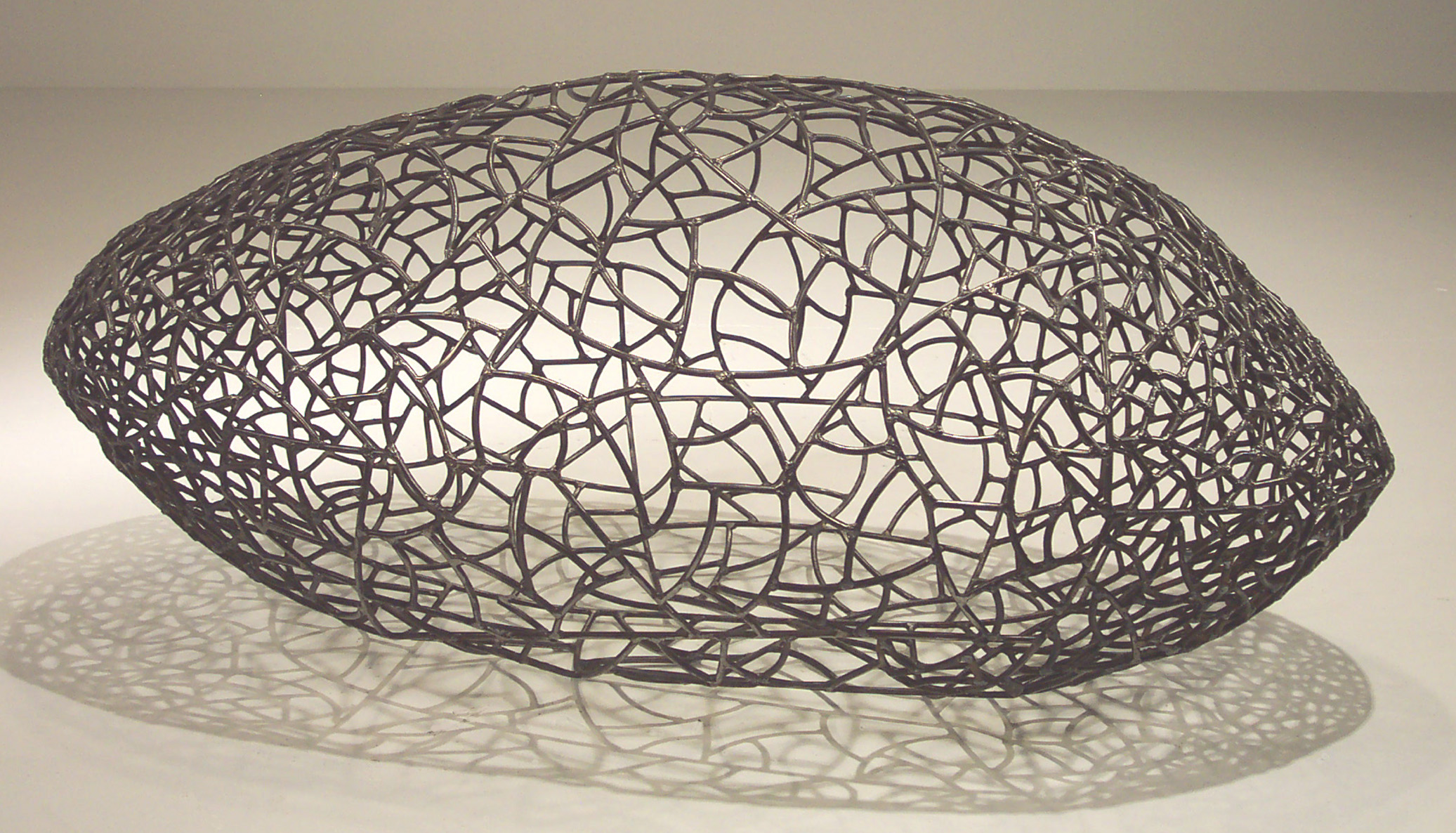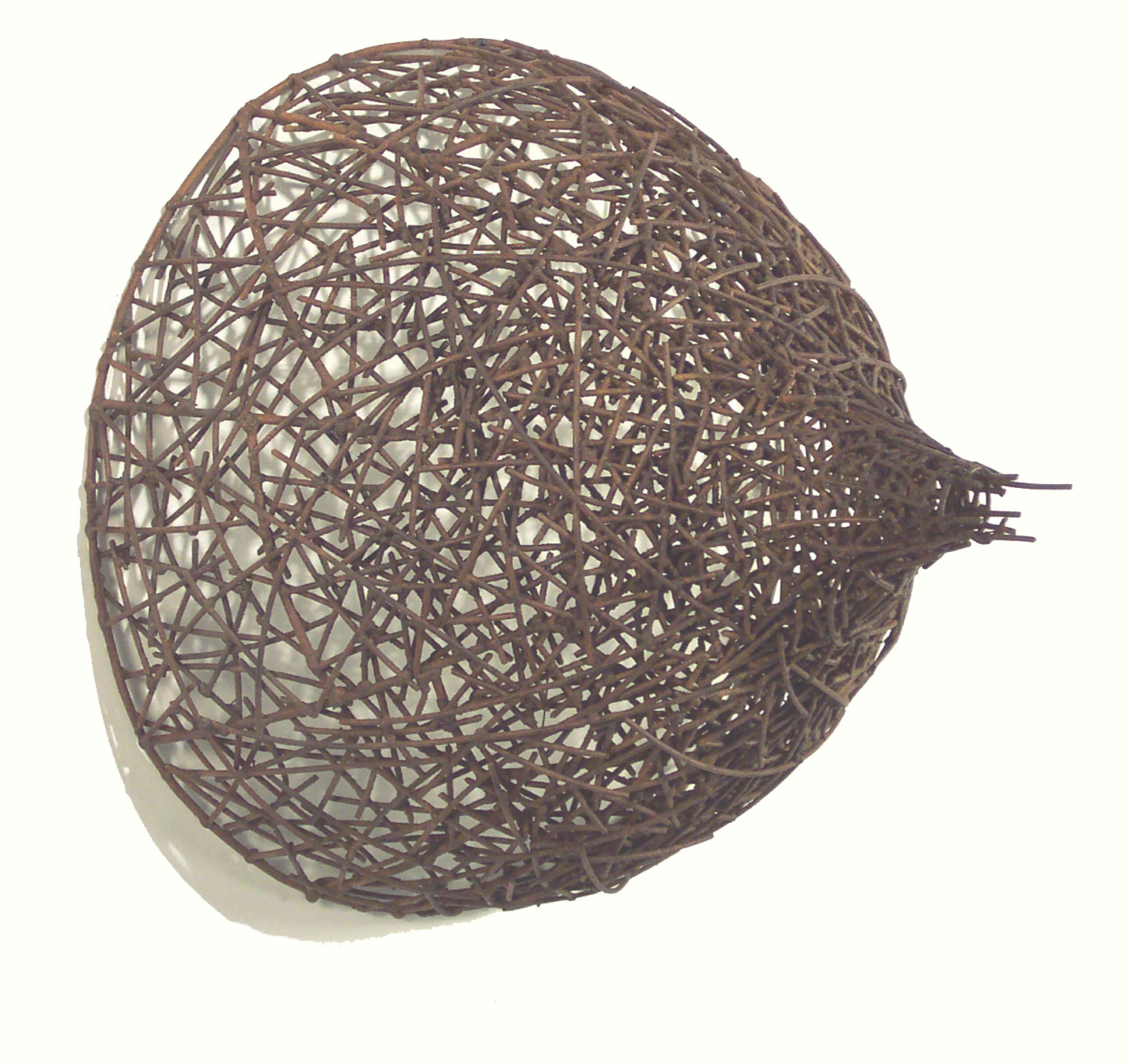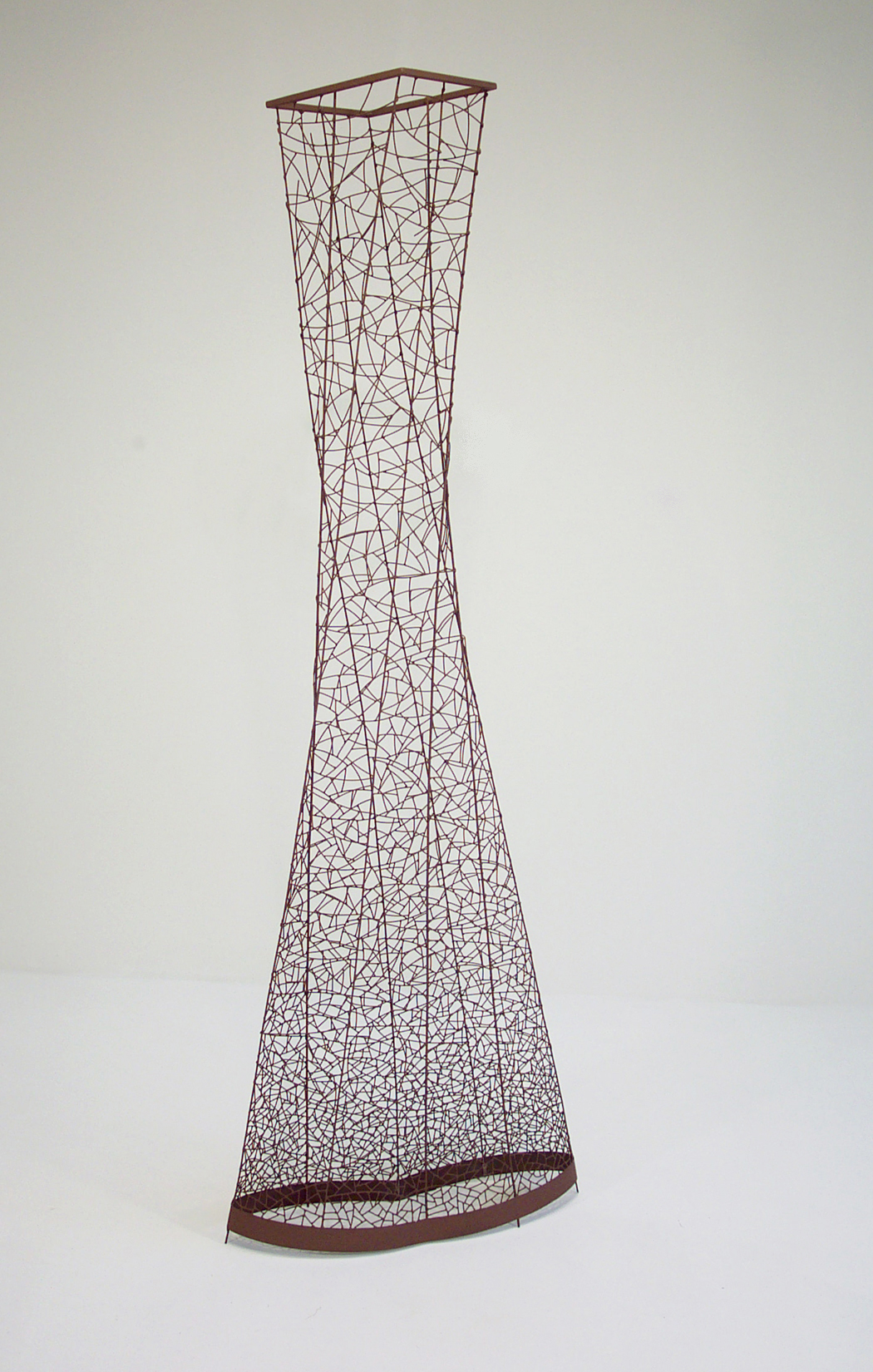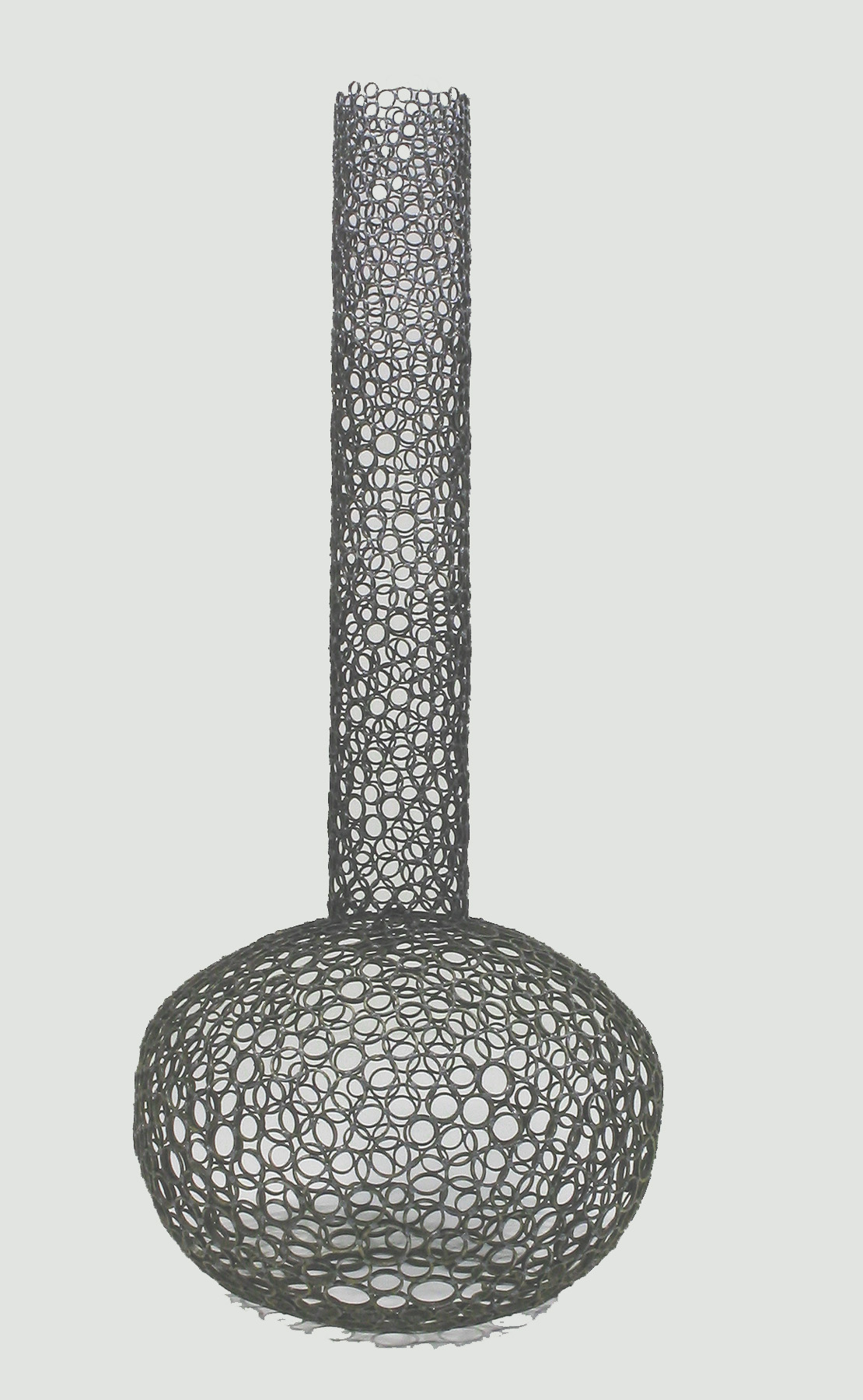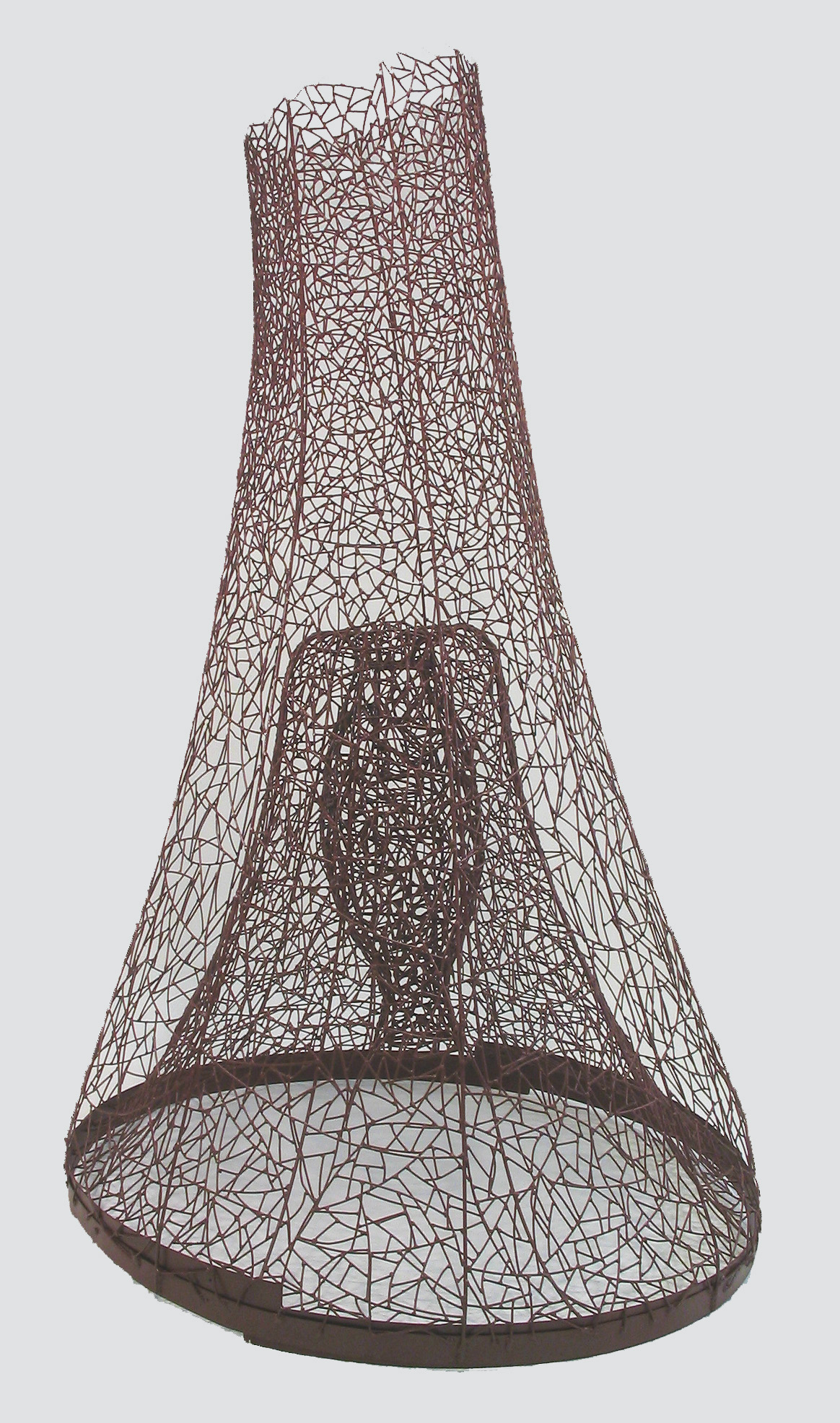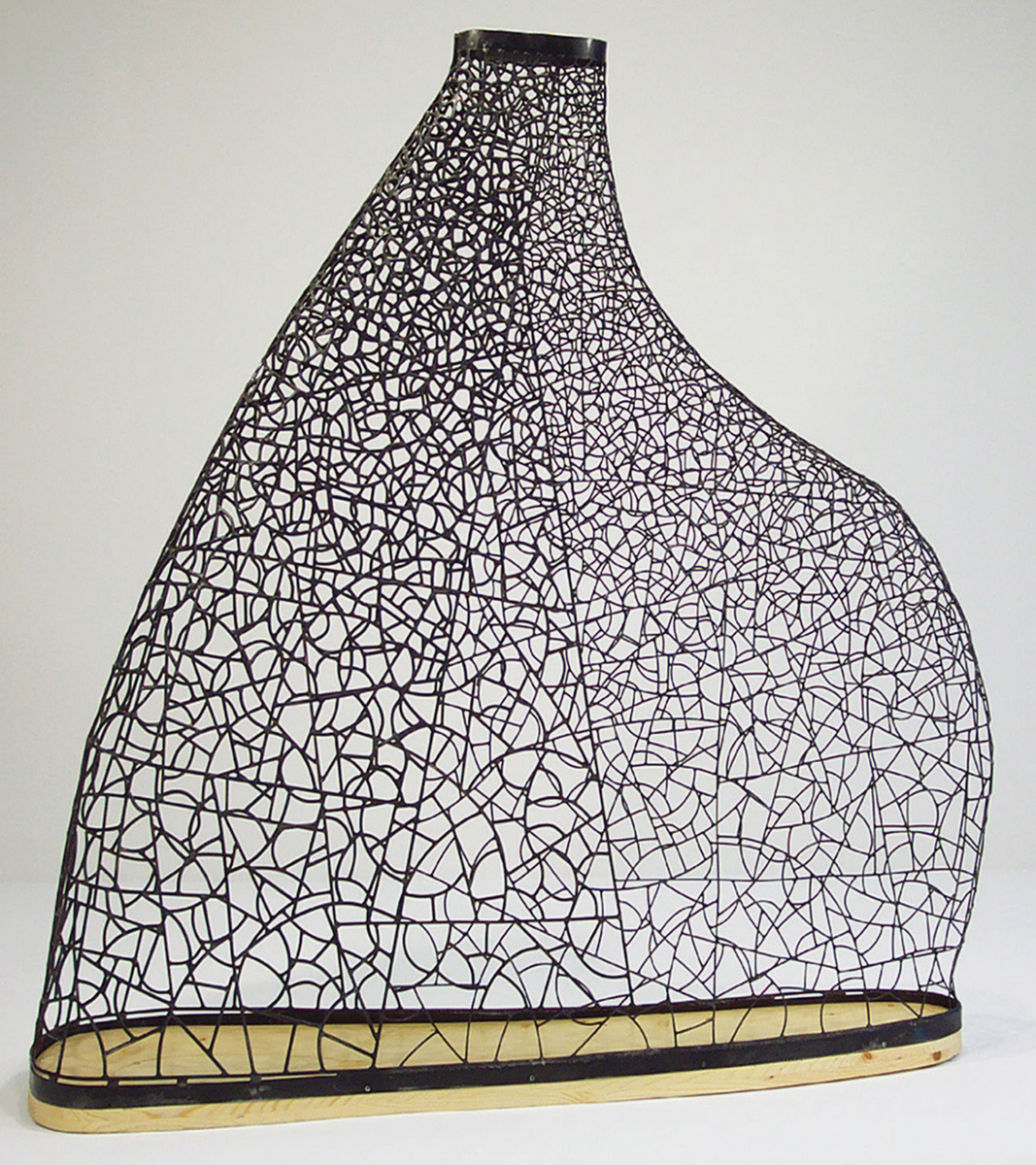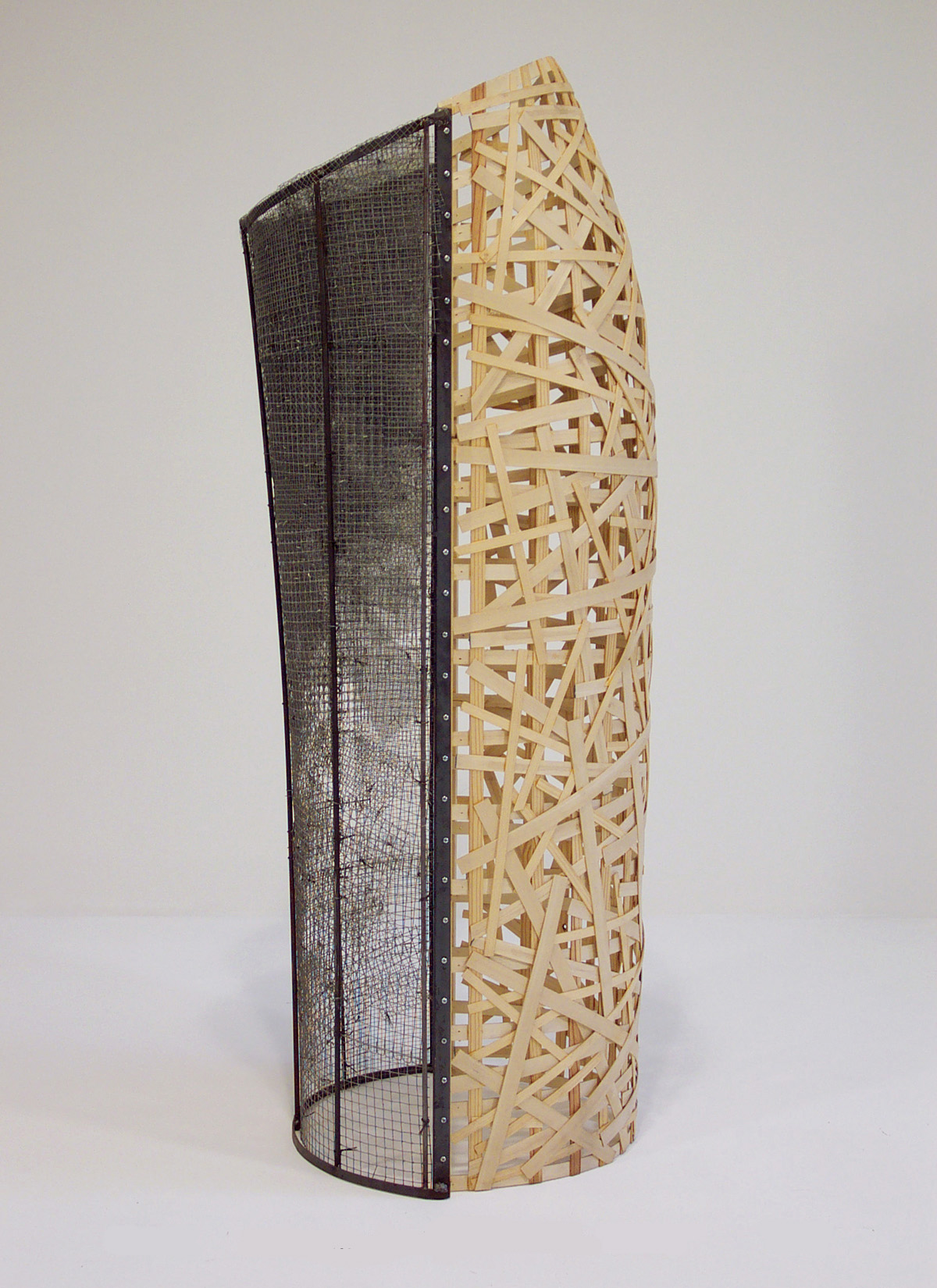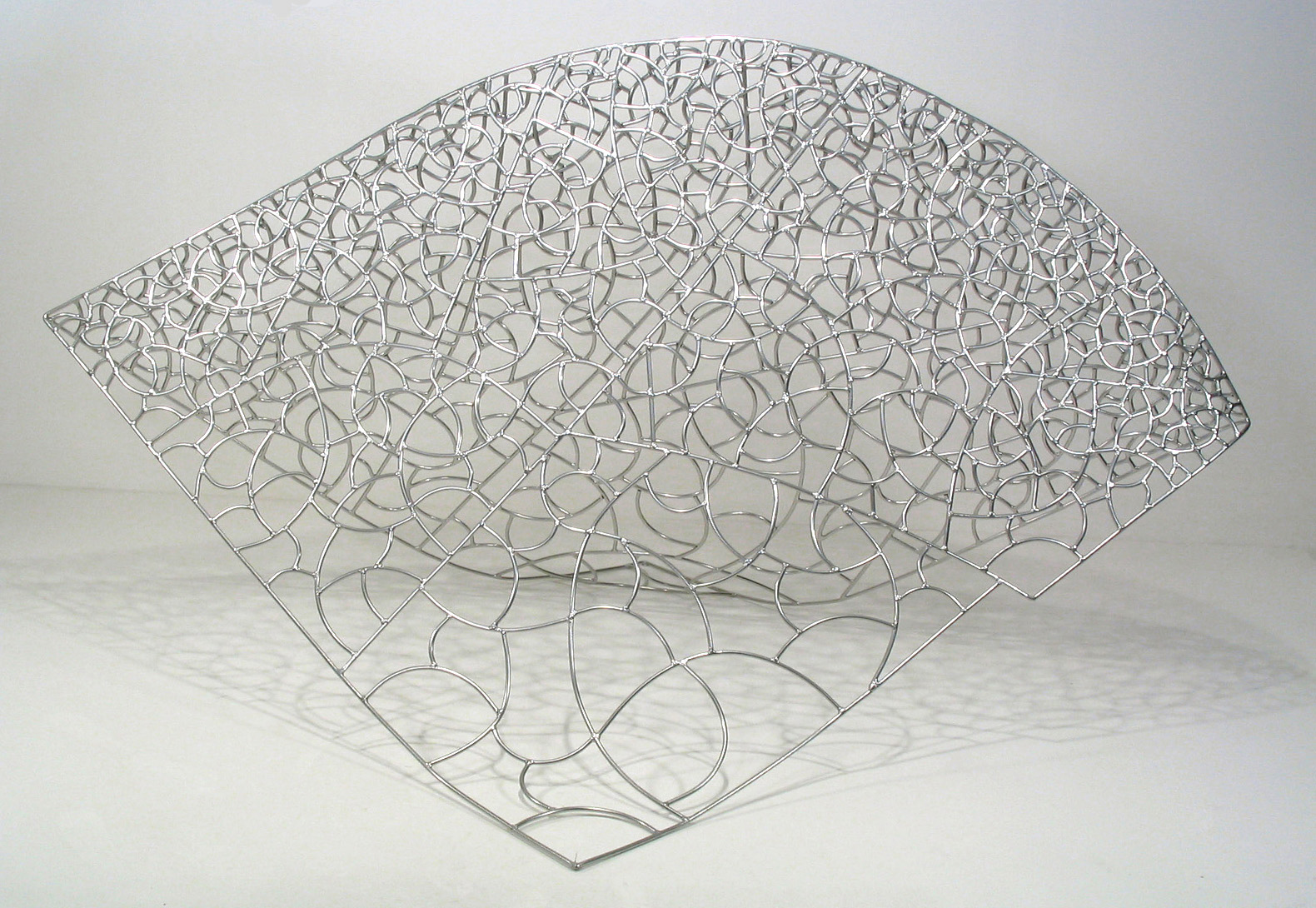Jasper Johns's Four Decades of Prints
November 7, 2003 - January 3, 2004
Four Decades of Prints by Jasper Johns featured 49 of Johns' prints that spanned the length of his career. The exhibition showcased his mastery in a variety of printmaking techniques including: lithography, etching, aquatint, photo engraving, silkscreen, intaglio and lead relief.
"Untitled [ArtSpace] brings to Oklahoma for the first time, an exhibition of Jasper Johns' Work. Untitled is one of only two places this 50-print exhibition, Jasper Johns: Four Decades of Print, will be on view. The exhibit previously opened in Toas, New Mexico and will return to its home in Kansas City in January. It is organizaed in cooperation with the Belger Arts Center for Creative Studies at the University of Missouri, Kansas City and the John and Maxine Belger Family Foundation.
Although the artist painted the first of his iconic American flags in the mid 1950s and received international acclaim not long afterwards, he began to pursue the art of printmaking in the 1960s at a time when printmaking wasn't in vogue. After only four years of working in the medium, Johns became known as a master printmaker and brought attention to what had almost become an extinct art form.
Johns belives in the process, the process of art. He believes in taking ordinary objects or images and creating something from what was considered familiar. As he has said, he chose 'things the mind already knows. That gave me room to work on other levels.'
Over and over again, he revisits the same subject, but each time he creates a different perspective. 'I'll never forget what an incredible experience it was a few years ago to see a large exhibit of Johns in Dallas,' says Laura Warriner of Untitled [Artspace]. 'I couldn't get over the thread that wove through his work. He continues to revisit his images, giving them a new definition, a new place, a new purpose. He retains all his printing plates and recreates new work with his old plates. It's difficult to describe the impact his work has had on me. I was able to get a glimpse into the mind of this creative genius.'
In this particular exhibit of Jasper Johns' work, it's readily evident how adept the artist is as a printmaker with prints created from various media includin lithography, etching, aquatint, photo engraving, silkscreen, intaglio and even lead relief. Likewise, his recurrent themes are also evident in this exhibition with an appearance of everything from his Savarin coffee cans to targets to American flags.
By using ordinary objects as images, Johns helps us rethink our perceptions. There's a double take, the sense that what we thought we knew may not be at all. What is familiar becomes oddly unfamiliar. Maybe for the first time, we see something we never really took notice of before.
He takes the mundane and gives it life. He takes the redundancy of life and makes it interesting. His art stirs us to revisit our own perceptions and see, by chance, if we too are just like art - in a process, a state of flux, a constant evolution from one thing to the next.
Bill Goldston, director of Universal Limited Art Editions on the East Coast, said of Johns' work, 'It is what it is. It's like reading Tolstoy. What you are able to understand is based on your life experience up until that moment. As you grow older and read it again, you understand more and it becomes more complex.'
In Jasper Johns by Michael Crighton, the author writes, 'For an artist who has already survived so many crises so brilliantly, we can be sure he will arrive at another motif, another set of concerns, another way of expressing his ideas. He will work himself into a bind, and then he will break free, and move onward, as he has always done, to our benefit and pleasure.'
And yet even more succinctly put by the artist himself, 'Take an object / Do something to it / Do something else to it.'"
- Nancy Woodard
Accompanied by
marc barker's new work
MARC BARKER USES DARK, SILHOUETTED FIGURES TO EXPLORE THE INDIVIDUAL'S RELATIONSHIP TO OTHER PEOPLE, A DIVINE BEING AND EXISTENCE ITSELF IN A SHOW OF QUIETLY THOUGHT-PROVOKING OIL ON MASONITE PAINTINGS AND MONOTYPES.
"The artist is Marc Barker, and his work on view with a selection of simplified sculptural creations in welded steel, wood, wire mesh and epoxy by Norman artist Jonathan Hils.
A resident of Oklahoma City who has been a faculty member at the University of Central Oklahoma, Barker co-founded Cosus Interactive, a city-based communications company in 1995 for the Vectrix Corp. of Dallas.
One of Barker's works with religious overtones is Last Supper, a horizontally hung oil of 13 silhouetted head-and shoulder-figures, placed at angles, who seem to be looking away from us at something happening in the light-filled space behind them.
Similar, at least in terms of compositional elements, are the nine 8-by-10-inch oils that collectively make up a work by Barker with the intriguing title No One is Your Friend; No One is Your Enemy; Everyone is Your Teacher.
Group dynamics and interpersonal relationships are explored in Barker's small oil of a lightly shaded, upside-down figure at the top of the composition that becomes an Outcast relative to a row of three darker figures at the bottom.
A giant head looks down on a nude, sleeping, recumbent female in Barker's Voyer - a work that takes its title from a French word which means 'to see' rather than from the English word 'voyeur.'
A relative pale, mysterious figure, balancing precariously, upside-down, on top of the dark head of a standing man represents God in Barker's Homo cum Deo - a small oil that is replicated in two larger digital reproductions.
A dark head with teeth, which a lighter rectangle emphasizes, becomes a Scary Face in one Barker monotype, while a second monotype of a shadowy head has the gently satiric title Thank God Jesus Was a Liberal.
The Barker and Hils exhibits are recommended during their run at Untitled, where they will be displayed along with the Jasper Johns: Four Decades of Prints show."
- John Brandenburg, NewsOK
jonathan hils' new work
NEW WORK BY JONATHAN HILS PRESENTED HIS SIMPLIFIED SCULPTURAL PIECES OF WELDED STEEL, WOOD, WIRE MESH AND EPOXY.
"My particular attraction toward art has always been engaged by the process of construction and understanding the developing relationships between the natural or organic and the scientific or industrious where locales, beliefs and attractions are discerned within contemporary life.
Outside of a yearning to understand place, belonging, and identity, there is a belief in elements, materials and structures that interact on universal levels to define existence and unanimity. I'm intrigued by the integration (assimilation) and, at the same time, nullification of nature/organic by our technologically driven culture. I do not see my work as sentimental to this end, but rather pointing toward the inherent desire to strike a balance between advancement, its consequences, and the constantly changing awareness of our perceptions of our environment and history.
My work deliberately utilizes craft, or the notion of crafting as it pertains to organization, control, and time. My employment of, or allusion to, craft spans the practical notion of 'work' and the conceptual debate of 'art' (or craft as a conceptual dictate for sculpture). Craft has been an integral part of my history as I experienced watching my parents, uncles and aunts work with fibers, clay and wood. I do feel a certain sense of urgency towards aspects of 'making' and 'working' that are quickly being replaced or displaced through rampant technological acceptance within society.
The connections to craft presents certain working processes that speak to repetition, obsessive tendencies and persistence; basic human and natural motivations for evolution (generally out of necessity). Some of my work is produced through literally welding thousands of small pieces of steel wire together or making thousands of marks in wax or wrapping material hundreds of times."
- Jonathan W. Hils

